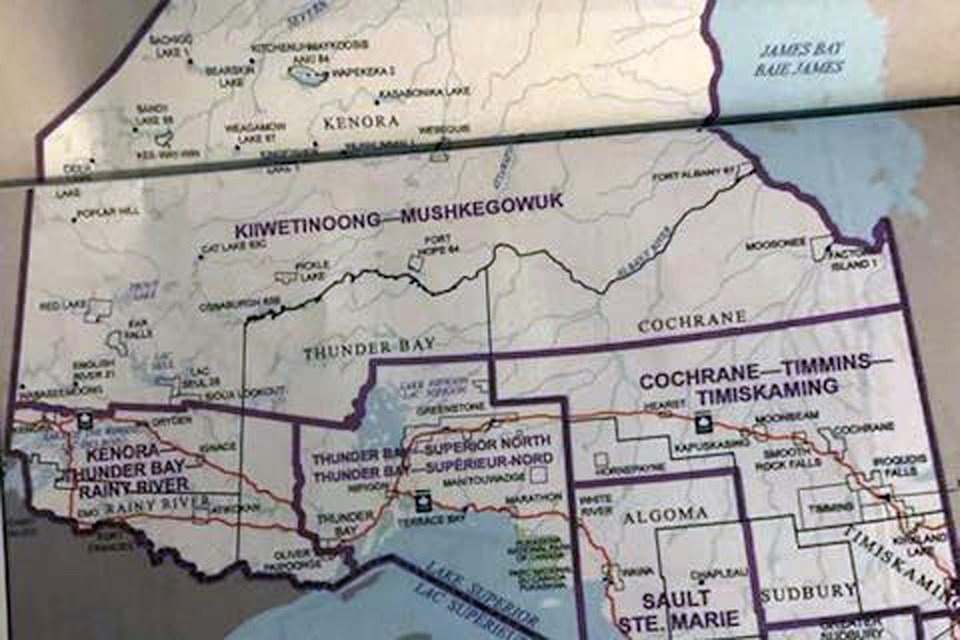THUNDER BAY – Northern Ontario may lose a seat if the federal election boundary redistribution proposal comes into effect, though the province as a whole would gain a seat.
The Ontario commission, charged with the redistribution process in the province, is expected to recommend the Kenora riding be merged into Thunder Bay-Rainy River, creating a much more widely spread-out riding called Kenora-Thunder Bay-Rainy River.
The move would combine the Kenora riding currently held by Conservative Eric Melillo, with Thunder Bay-Rainy River, at present represented by Liberal Marcus Powlowski.
The change would not come into effect until April 1, 2024 at the earliest, so if the current Liberal minority government were to fall before that date, the current boundaries would remain in effect.
The new riding would stretch from the south side of Thunder Bay to the Manitoba border, south of Sioux Lookout.
The current Kenora riding encompasses most of Kenora District north to the Hudson Bay coast.
A new riding of Kiiwetinoong-Mushkegowuk has been proposed to represent the vast majority of Ontario’s Far North, stretching from the Manitoba border to the James Bay coast north of Kenora-Thunder Bay-Rainy River, Thunder Bay-Superior North and Cochrane electoral districts, and the Quebec border to the east.
According to Elections Canada, the current Thunder Bay-Rainy River riding has a population of 82,805, while the riding of Kenora has a population of 62,656.
The new Kiiwetinoong-Mushkegowuk would have a population of about 36,325. Kenora-Rainy-River would have 101,097 and Thunder Bay-Superior North would be 99,035.
The average riding in Ontario has 111,145 residents, though under the proposed boundary changes, that would grow to 121,527.
Thunder Bay-Superior North would remain unchanged under the proposal, which is expected to be posted online on Friday at www.redistribution2022.ca. Its population is 82,651.
As a whole, Ontario would grow one seat, to 122, in the House of Commons, while five new seats would be added across the country, with three seats added in Alberta and one additional seat in British Columbia.
Redistribution is conducted every 10 years using the latest census results.
At least one public hearing must be held, no sooner than 30 days from the publication of the proposed electoral district boundary changes, by the three-member commission charged to oversee the riding change process. The commission chair is appointed by the provincial chief justice, while members are appointed by the Speaker of the House.
The new boundary limits come into effect following the first dissolution of Parliament that occurs no less than seven months after they are proclaimed and published in the Canada Gazette, which is expected to occur in October 2023, after the new Representation Order is declared in force by a proclamation of the Governor-in-Council.
The earliest the new boundaries could come into play would be April 2024.
The current Thunder Bay-Rainy River riding is represented by Liberal Marcus Powlowski, while Kenora is represented by Conservative Eric Melillo.
